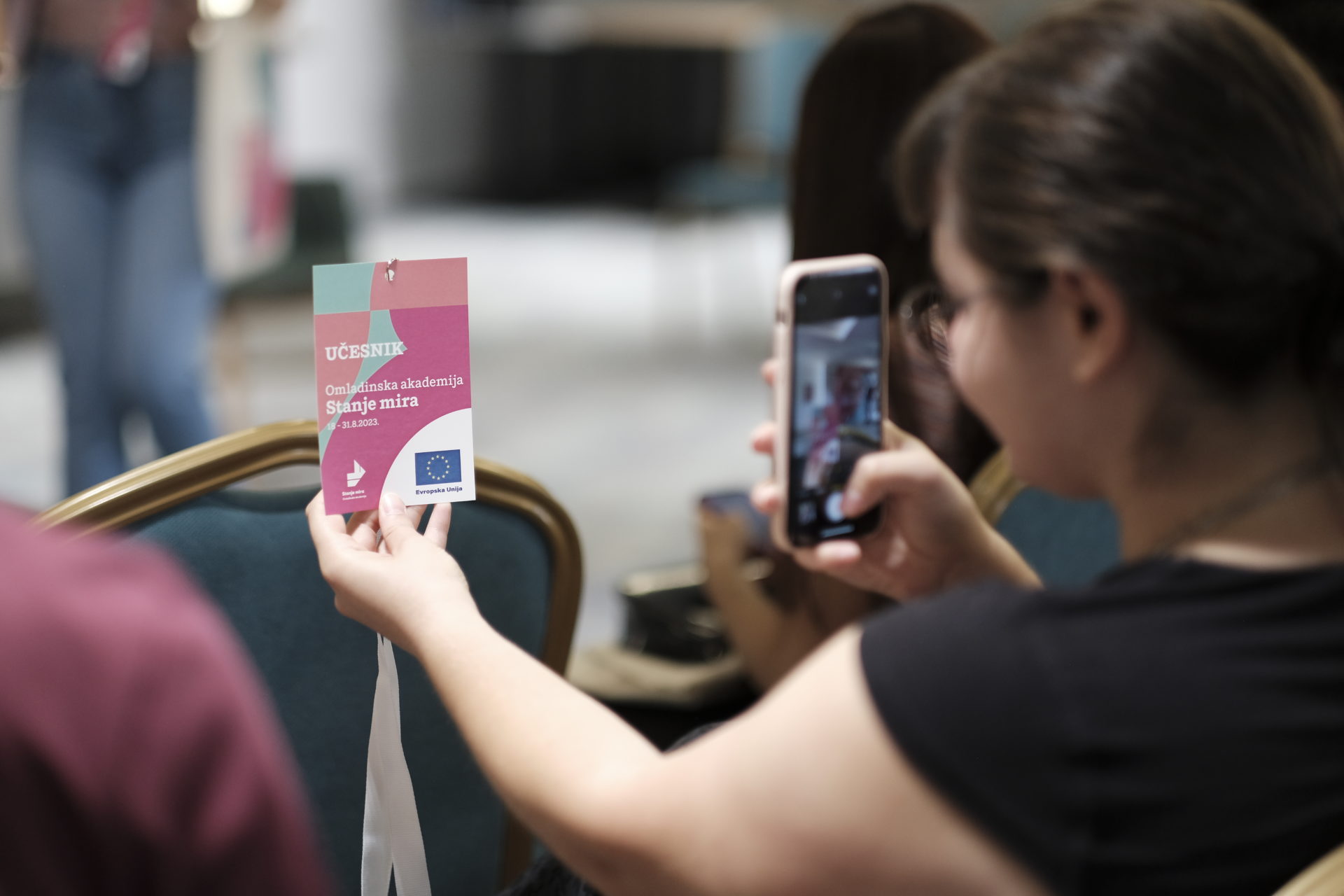Cover photo: Mitar Simikić
Young people coming together to honor the civilian victims of the war in Bosnia and Herzegovina, irrespective of ethnicity, contributes to efforts to face the past and build sustainable peace.
In August 2023, young participants of the State of Peace Youth Academy placed flowers and paid their respects to civilian victims of war in Tuzla, Brčko, Sarajevo, and Vitez. The participants, coming from Croatia, Serbia, Montenegro, and Bosnia and Herzegovina, learnt about the atrocities committed in the country based on the rulings of national courts and the International Criminal Tribunal for the former Yugoslavia.

The State of Peace Youth Academy, organized by the European Union in collaboration with the Post-Conflict Research Center (PCRC), took place from August 18 to 31, 2023, with the aim of engaging young people from the Western Balkan countries in peace and democracy-building.
A special component of the Youth Academy was the commemoration of civilian war victims. According to Velma Šarić, the president and founder of the PCRC, this is because the process of facing the past cannot be sustained continuously if young people are not involved.
Šarić explains that in Bosnia and Herzegovina, the commemoration of civilian victims remains unregulated at a national level, with permits for the construction of monuments and memorial sites granted by local authorities. She emphasizes that this situation leads to the creation of monuments that bear messages of hatred and division, lack educational components, and are divorced from the legally established facts about the atrocities committed.
Nikola Pavlović, a Youth Academy participant from Belgrade, said that this was his first time in Tuzla and his first time hearing about the grenade fired by Serb forces that struck the city gate. He expressed his gratitude for the opportunity to visit Tuzla and extended his condolences to the families of the deceased.
On May 25, 1995, the Army of Republika Srpska fired a grenade from Mount Ozren into the heart of the eastern Bosnian city, killing 71 people and wounding more than 120 at the Tuzla Gate.

During the Youth Academy’s act of commemoration, participants laid flowers in tribute to the 116 Bosniak victims killed by the Croatian Defense Council in the western village of Ahmići.
The Youth Academy participants spoke with Hazrudin Bilić, a survivor of the massacre, who shared his personal story and educated participants about the details of the Ahmići attack.
Participants also visited the Osmica monument, commemorating eight Bosnian Croat children killed in Vitez in 1993. Ivan Garić, whose sister was among the victims of this atrocity, spoke about the construction of the memorial and the efforts of families to preserve the memory of their loved ones.
An attempt was made to lay flowers at the Memorial monument “Kazani, 1992-1993.” which was built in memory of killed Serb and Croatian civilians during the war in Sarajevo, but due to disorganization and inaccessible terrain, this was not possible. “This shows us that more needs to be done in the field of remembrance and memorialization, so that young people have access and the opportunity to learn about the history of our society,” said Šarić.
Flowers were laid in honor of the civilian victims of the war in Brčko (northern Bosnia). Tea Ružić, the Advisor to the Mayor of Brčko District for youth and the non-governmental sector, says that the joint monument for all war victims signifies that every tear is equal and a part of our history. “I think that, with this monument, we’ve sent a positive message from Brčko, because I can freely say that Brčko is an example of post-war reconciliation and coexistence,” Ružić stated.
Ahmo Mehmedović, a participant from Srebrenica, considers memorialization crucial in creating lasting monuments and memories for the victims. “They’re a special dimension in facing the past, and it’s essential for young people to visit them and learn the facts about the war. Memorials should motivate young people to commemorate war victims through a variety of acts. With the knowledge, empathy, and inspiration acquired from visiting these memorials, I believe that young people will contribute to this,” remarked Mehmedović.

Lora Jurić, a participant from Đakovo, also spoke about the importance of young people from different nations and ethnic backgrounds visiting the sites of suffering for all groups. “I personally didn’t grasp the depth of these stories. I knew our military operations as a Croatian movement to liberate Croats, but now I see the bigger picture. These were innocent people who didn’t know why they were dying or why they were fighting. They were all victims of a toxic mindset, believing that war would bring peace,” concluded Jurić.
_______________
This article was initially published within the second edition of MIR Magazine. MIR, which means ‘peace’ in Bosnian is an annual publication and platform for young inventive people developed by the Post-Conflict Research Center and Balkan Diskurs.
balkandiskurs.com



